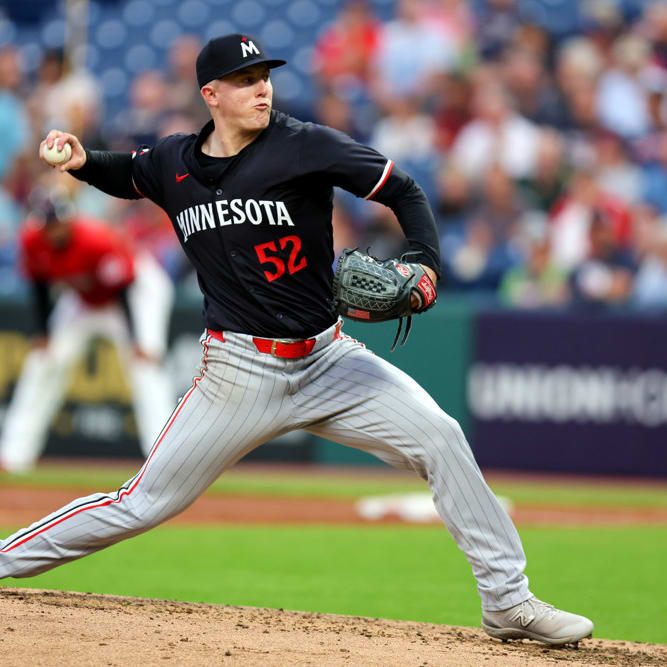This article is part of our Scouting Pitchers series.
With the injury to Stephen Strasburg and Tim Lincecum's dramatic loss of velocity, I'd like to throw out for discussion what readers think is the best delivery for a power pitcher. I guess I should make that clearer: what is the best delivery for a power pitcher who wants to stay healthy and throwing hard into his 30's?
One of the great things about writing this column is that the internet provides us with many more opportunities to have this type of discussion. Just five years ago, the video links you see below were not available. Here are a few videos to some of the great power pitchers. I have taken the liberty of dividing them into categories based on their motions.
This is a first crack at a categorization, so I will be updating and changing this as time goes on. Some pitchers fall into more than one category. You could fit Brandon Morrow, for example, into the "arm speed demon" and "curveballer" groups. Felix Hernandez could go in two or three categories. Let me know what you think.
#1: The Classic
With 5,714 strikeouts, Nolan Ryan was the prototypical power pitcher. He was famous for his work ethic, often bicycling for hours after throwing over 130 pitches. The attention he paid to his legs trunk is reflected in this footage of his seventh no-hitter in 1991. Ryan's delivery follows what I have read about in Bob Cluck's book Play Better Baseball, in which Cluck points
With the injury to Stephen Strasburg and Tim Lincecum's dramatic loss of velocity, I'd like to throw out for discussion what readers think is the best delivery for a power pitcher. I guess I should make that clearer: what is the best delivery for a power pitcher who wants to stay healthy and throwing hard into his 30's?
One of the great things about writing this column is that the internet provides us with many more opportunities to have this type of discussion. Just five years ago, the video links you see below were not available. Here are a few videos to some of the great power pitchers. I have taken the liberty of dividing them into categories based on their motions.
This is a first crack at a categorization, so I will be updating and changing this as time goes on. Some pitchers fall into more than one category. You could fit Brandon Morrow, for example, into the "arm speed demon" and "curveballer" groups. Felix Hernandez could go in two or three categories. Let me know what you think.
#1: The Classic
With 5,714 strikeouts, Nolan Ryan was the prototypical power pitcher. He was famous for his work ethic, often bicycling for hours after throwing over 130 pitches. The attention he paid to his legs trunk is reflected in this footage of his seventh no-hitter in 1991. Ryan's delivery follows what I have read about in Bob Cluck's book Play Better Baseball, in which Cluck points out that a pitcher's drive comes not from his back foot, but from the rotation of the hips. Cluck favors bringing the arm up quickly, with the ball pointing to the sky at the mid-point of the delivery, so the arm does not trail behind the body as the delivery uncoils.
Contemporaries:Roy Halladay, Justin Verlander, Jon Lester, David Price, Cliff Lee, Zack Greinke
#2: The Drop-and-Driver
Tom Seaver is sixth on the all-time strikeouts list with 3,640. He would get so low to the ground that his right knee would get dirty. I believe he took this as a sign his mechanics were in line. A high arm slot from the outset isn't really possible in this type of delivery. Seaver's left leg was bent as he brought his arm through, as opposed to the stiff front leg on which many power pitchers land. On April 22, 1970, Seaver struck out 19, including 10 in a row.
Contemporaries:Tim Hudson doesn't go as low as Seaver, but shares the same ground-ball tendencies. You can see him fan 13 Marlins here.
#3: The Curveballer
With 287 wins, 3,701 strikeouts (fifth all-time), and a 3.31 ERA, it's silly that Bert Blyleven is not in the Hall of Fame. With a dropped forearm at the mid-point of their delivery, breaking-ball pitchers gain extra torque and snap by bringing their arm up quickly. This also helps them "hide the ball," as the hitter has less time to pick up the ball coming out of the pitcher's hand. Blyleven also had some good late movement on his fastball.
Clay Buchholz is a contemporary version of Blyleven, with a snappy curveball to go with a 92-96 mph fastball. What has made Buchholz so tough this year are the improvements in his changeup, cut fastball, and control. You won't see many curves in this footage of his win over the Yankees, but his cutter and changeup are on display.
My quibble with this motion is that it looks ungainly from an ergonomic perspective, given the late movement of the arm to bring it through. It seems many of these pitchers lose their good fastballs early as a result. Yet Blyleven pitched 22 seasons, so obviously it is possible to have a long career.
Other Contemporaries:Adam Wainwright, Gio Gonzalez
#4: The Gymnast
With the help of his father, Tim Lincecum modeled his motion on Sandy Koufax. Both drop their forearm and use maximum leverage to create torque and velocity. Looking at Koufax closing out the 1965 World Series,, he stayed completely straight over his front leg during his delivery. His fastball looks easily 94-96, with that amazing curveball.
Lincecum falls off the mound more than Koufax, but the basics of his mechanics look similar. Why has he lost so much velocity? There are rumors that he has not kept up his conditioning.
#5: The Arm-Speed Demon
This is the category into which I would place Stephen Strasburg. Like Rick Ankiel, Strasburg's arm speed is such that he generates overpowering stuff. Strasburg worked over the Phillies here.
#6: The High School Athlete
This class has such outstanding athletes that they succeed despite not having textbook deliveries. One gets the sense that they could have played a number of sports. I call them "high school" athletes because most of these pitchers never went to college. CC Sabathia is a prime example – here is some footage of him against the White Sox.
Other contemporaries:Edwin Jackson, Josh Johnson, A.J. Burnett, Clayton Kershaw
#7: The Stretcher
Mat Latos is an example of someone who gains full arm extension during his delivery. He relies a lot on arm strength and leverage, as he stays upright during his delivery. Here he handles the Phillies. Jered Weaver, leading the majors with 200 strikeouts, is another whirlybird. He throws across his body more than Latos, but still stays on a good line to the plate. You can see him strike out 11 Orioles here. Ubaldo Jimenez would probably go here as well.









